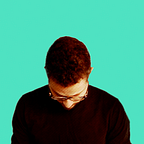Why Uber Might Become a Call Center That Also Delivers Pizza
An Open Source Product Strategy for Hungry Economists
Uber is known today as the little company that revolutionized the taxi industry. In the future, it is probable that we will know them for much more, including services as obscure as pizza delivery and crowd-sourcing. This is because Uber’s core innovation doesn’t stem from the pain of standing in the rain waiting for non-existent cabs, it stems from the problem of excess capacity.
Excess capacity is what you have when the opportunity to generate supply is greater than demand. Businesses can optimize their excess capacity by finding alternative uses for the supply or repurpose the capacity itself.
For example, if you could pick 100 lemons every day, but people would only buy 50 lemons worth of lemonade, you could reduce waste by only picking 50 lemons a day. You could also optimize your capacity to pick 100 a day, by finding other uses for the extra 50 lemons, or by picking apples or oranges.
When optimizing excess capacity, businesses tend to pursue tangential opportunities first — a restaurant becomes a bar after hours, an apartment becomes a hotel via AirBnb when its owners are gone, etc. What differentiates Uber from other businesses optimizing excess capacity is that they are doing it recursively — optimizing excess capacity that is created from excess capacity. Let me explain:
First Order Optimization — Uber Today
Taxis have excess capacity when they fail to find passengers. The longer a taxi drives around without a passenger, the more money they lose out on. Uber helps drivers proactively find passengers during times when it is hard to simply spot them on the street. This cuts down on excess capacity, making drivers more efficient. This is the core business of Uber today and it is what we know and love them for.
Second Order Optimization — Uber in 2016
Uber’s First Order Optimization put more drivers on the road, which has increased competition and resulted in more down-time for drivers during non-peak hours, and thus created additional excess capacity. Uber has recently been flirting with the idea of expanding into delivery and has even executed several proofs of concept for it. This would allow drivers to cut down on excess capacity when it is difficult to find passengers — or even when their seats and trunk aren’t completely full — and gain additional revenue from delivery. In the near future we could start to see Uber open up as a platform for businesses like Amazon or Pizza Hut to deliver through.
Third Order Optimization — Future Startups
Uber will likely spend their time focused on First and Second Order optimizations in the coming years more than anything else, which will inevitably grow their platform to extraordinary size. The Third Order Optimization focuses on tapping into Uber’ massive network of captive passengers (and drivers), and their excess cognitive capacity. Instead of listening to music or talking, passengers’ brain power could be put to better use in exchange for cheaper rides. Think customer surveys, crowdsourced image analysis, etc. If Uber opens up an API to allow Uber requests and promo codes to be generated from other apps, we could see a whole ecosystem of startups focused on monetizing this excess capacity in Uber passengers.
While today it is dangerous to ask drivers to fill out surveys or perform call-center functions while driving, these use cases could be more common when self-driving cars become more commercialized. The first legal implementations of self-driving cars will still require a human driver to be prepared to take control in certain circumstances. Naturally, if the car is driving itself, the driver has excess cognitive capacity that can be safely reallocated to other (more lucrative) tasks.
We could go much further down this recursive rabbit hole of excess capacity optimization for drivers or even apply it to idle passengers, but its just intellectual masturbation at this point. Uber still has many obstacles to overcome to secure its title as the next-generation taxi service, let alone build the excess capacity optimization platform discussed — namely, they must first fix their supply problem.
Whether or not they ultimately become a taxi service that also delivers pizza and takes customer service calls, only time will tell. Either way, they are doing some amazing things today — I mean, they delivered Christmas trees and kittens to people in San Francisco. How awesome is that?
Inspired by conversations with Brad Ruderman.
Follow me on Twitter, I’ve got a lot more to say.
